***Update August 17***
The Piping Plover Pair on Lea-Hutaff hatched two chicks earlier last month. These chicks had a lot to contend with—from ghost crabs, grackle, and heat to disturbances from people, dogs, and storms—as our trail camera showed.
Unfortunately, the chicks haven’t been seen since they were first spotted by our coastal team shortly after hatching.
Even though this nest didn’t make it, you can help us ensure that coastal nesting waterbirds continue to return to our shores by respecting posted nesting sanctuaries and keeping your dogs leashed and away from posted areas. Learn more about how to help our nesting coastal birds here.
***Original post July 24***
Nesting Piping Plovers are most common in North Carolina on the Outer Banks. The southernmost pair of these round, sand-gray shorebirds usually find a summer home on Figure Eight Island, but habitat change brought a pair to Lea-Hutaff Island this summer, the first Piping Plover nest on this undeveloped barrier island since 2014.
The island’s open bare sand is the perfect breeding ground for shorebirds like the Piping Plover, which are Federally listed as threatened (and endangered in the Great Lakes region). But even with our staff monitoring and protecting sites like Lea-Hutaff throughout the nesting season, dangers abound.
Biological Technician Anna Cheshire first came across the nest in early June and set up a trail camera to minimize staff visits to the nest. What she discovered was a myriad of dangers – natural or otherwise – showing just how difficult life is for shorebirds this time of year.
“It’s no surprise that we were able to capture some of the threats these shorebirds face during the nesting season,” says Cheshire. “What we didn’t expect was the frequency and diversity of the threats this pair would face.”
The Danger-Filled Life of the Piping Plover
It’s hard to see, but the nest is farther back toward the patch of grass in the center-left of the trail camera photos. Plovers like to nest near small clumps of grass or objects like sticks or rocks, which might provide some natural shade or camouflage.
Ghost Crabs – Several ghost crabs were spotted around the nest, attempting to prey on the unhatched eggs. In this trail cam photo, you can see one of the adults protecting the nest from a creeping crab. Trapping around the nest removed several of these hungry predators.
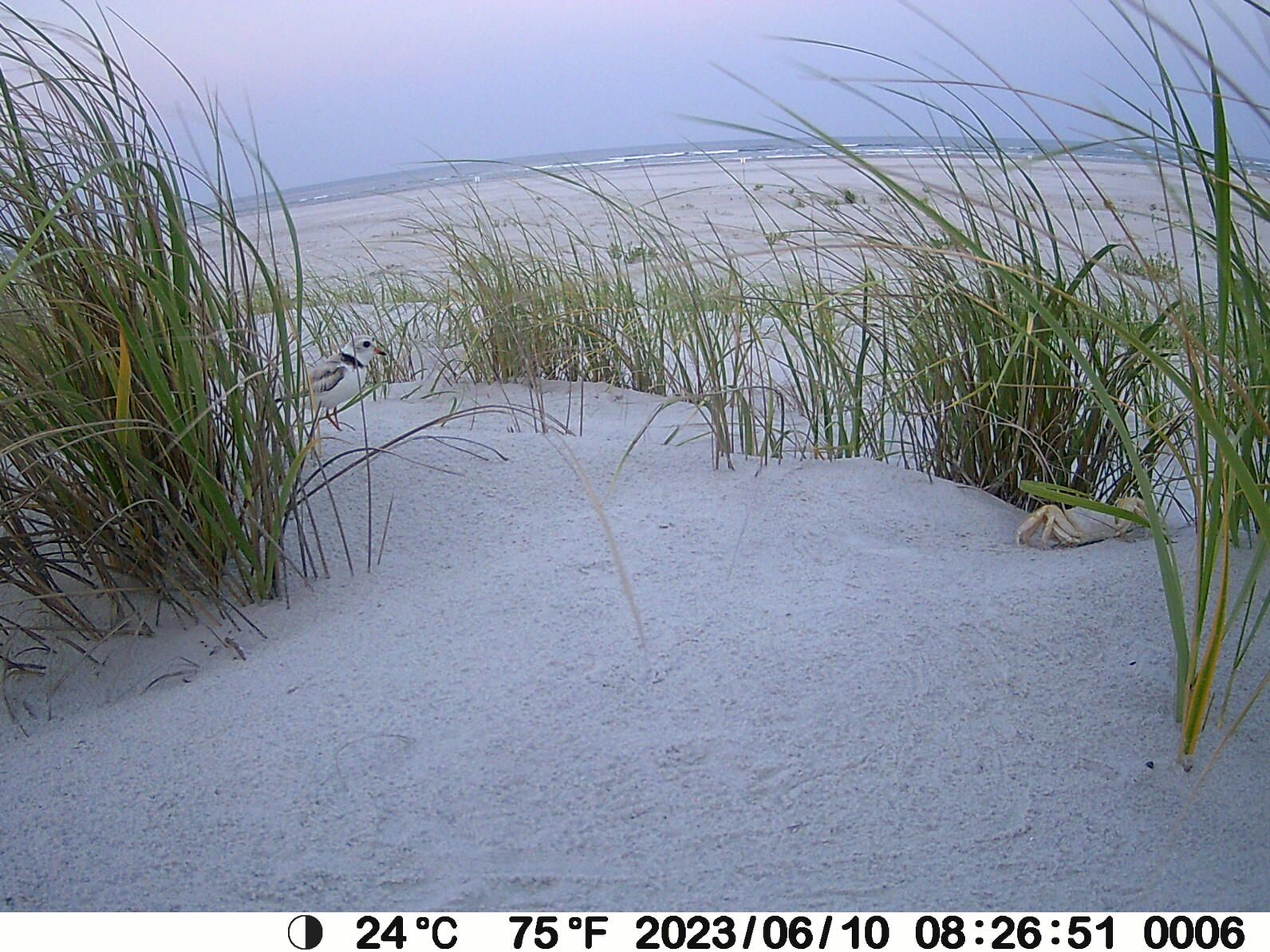
Heat – Soaring temperatures can make it hard for eggs and baby chicks to survive. Notice that one of the adults is incubating (center left, hidden in the grass) and the other is actually using the shade of the camera’s shadow to keep cool. The soaring temperatures are recorded in the information strip at the bottom of each photo—on some days, the trail camera’s recordings topped 100°F.
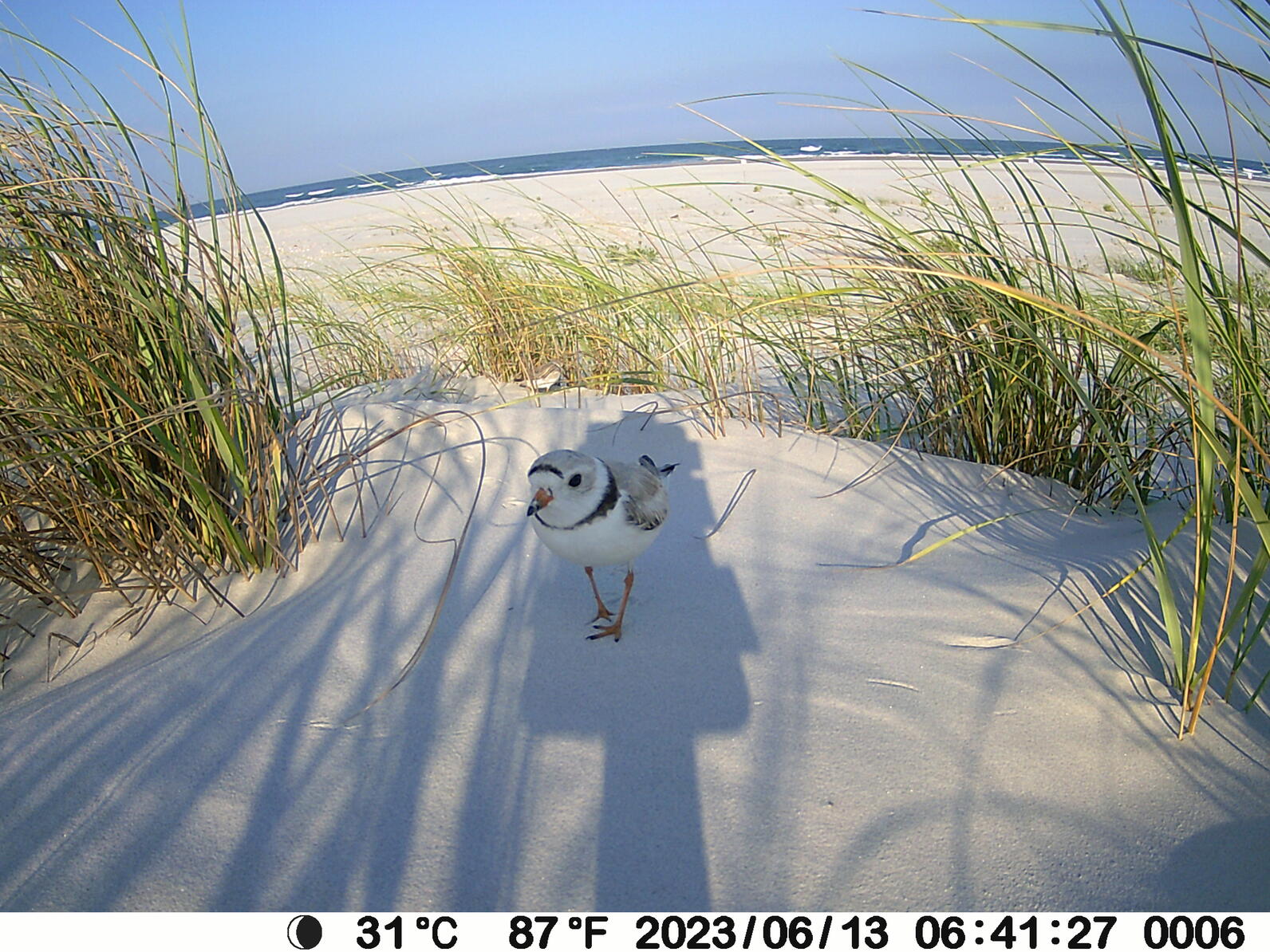
Birds – A Boat-tailed Grackle considers the nest but is attacked by the adult (far right). It may come as a surprise but sometimes the biggest threat to nests is other birds.

People – Birds can easily be spooked from nests if people come too close. This prevents parents from tending to eggs and chicks. Notice that in this picture the nest is untended due to beachgoers who trespass into the posted area.
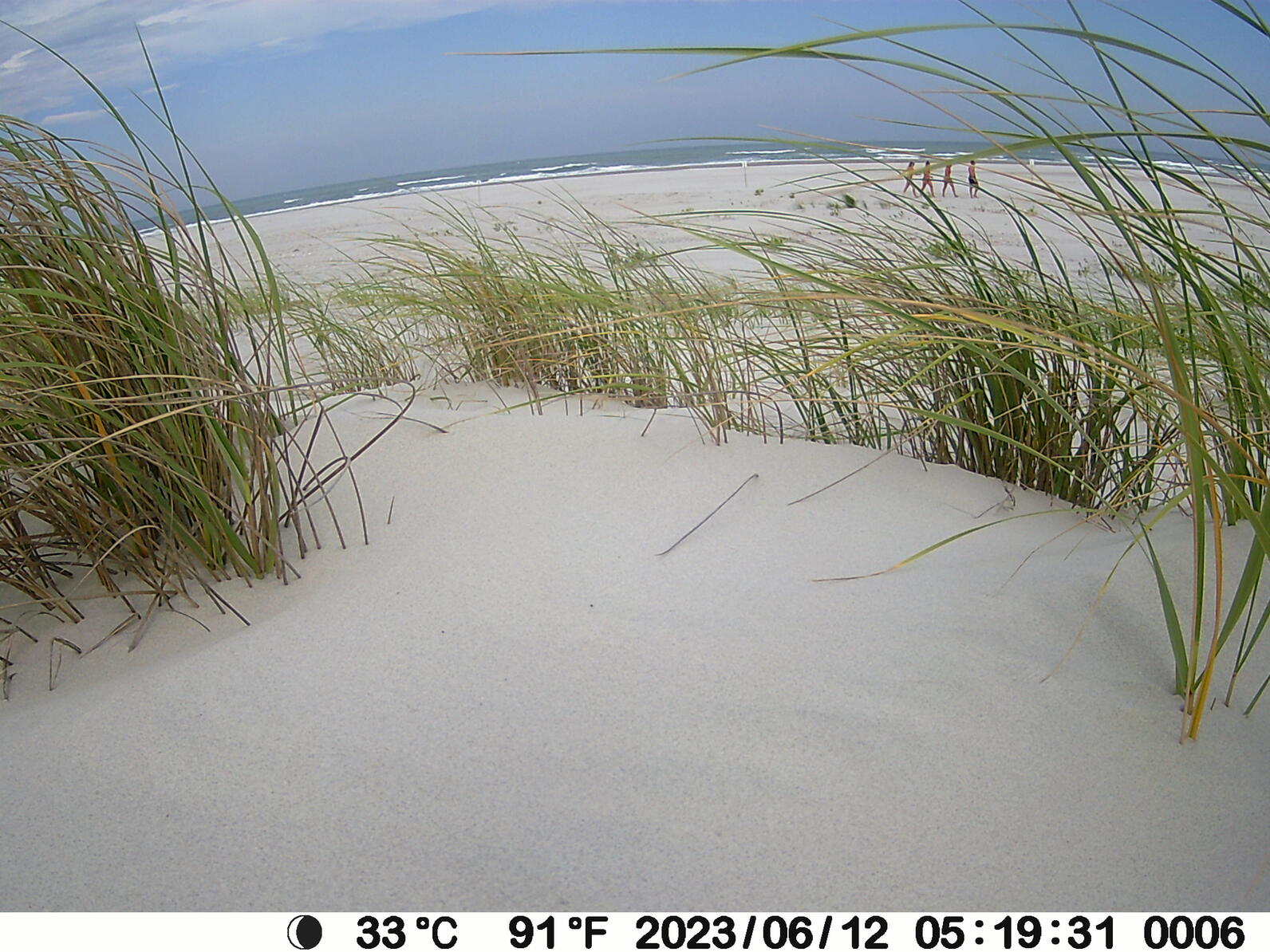
Dogs – Dogs are well known to cause trouble for nesting shorebirds. Eggs or baby chicks can easily fall victim to curious pets, and even well-behaved dogs frighten adults and chicks because they look like their natural predators. In this image you can see an unleashed dog freely roaming through the nesting area.
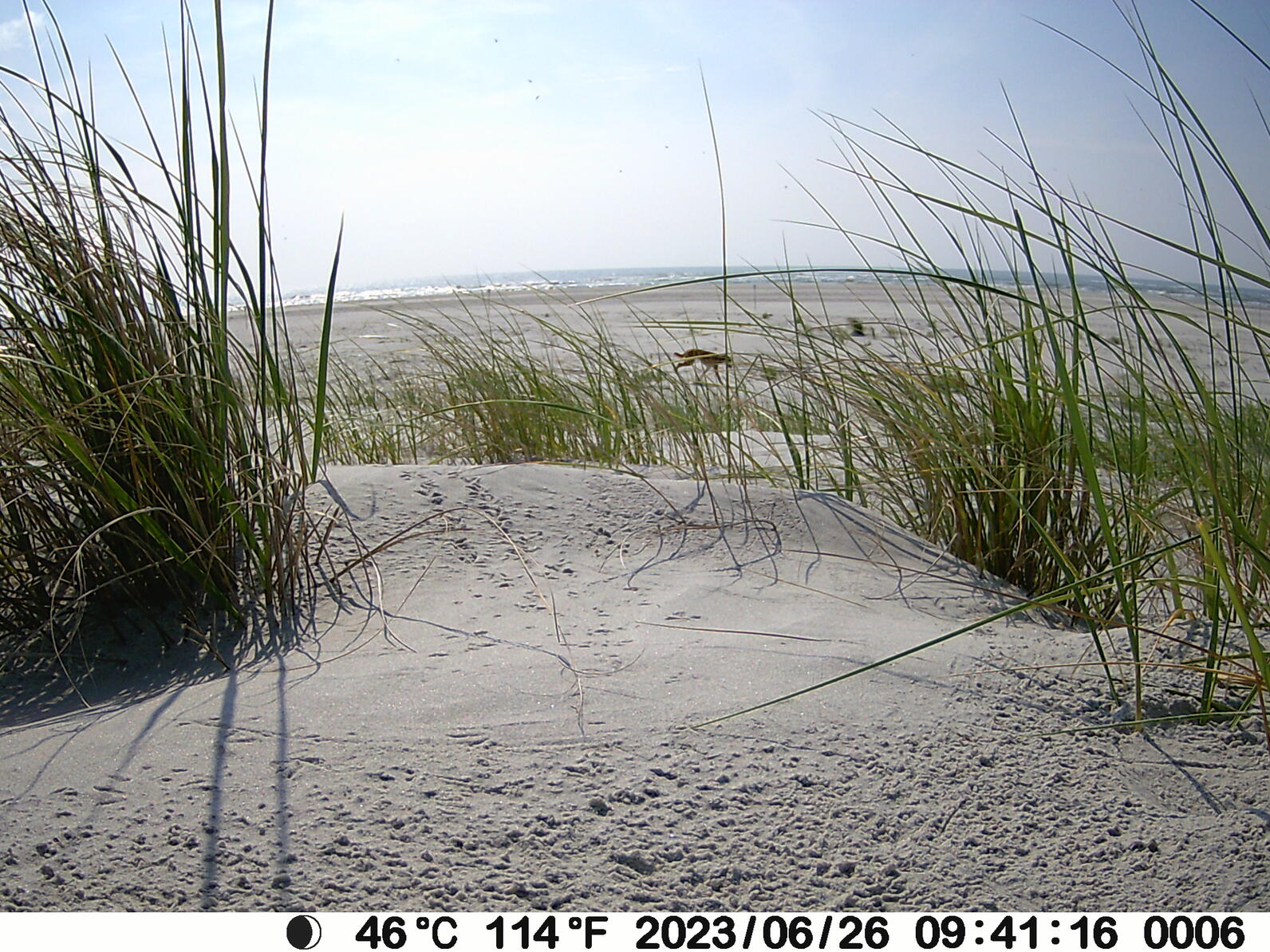
Storms – Natural occurrences that have been made worse by climate change make life more difficult. Beach-nesting birds have adapted to survive foul weather, but more frequent and severe storms can make re-nesting difficult and increases the chance of nests being carried away by flood waters.
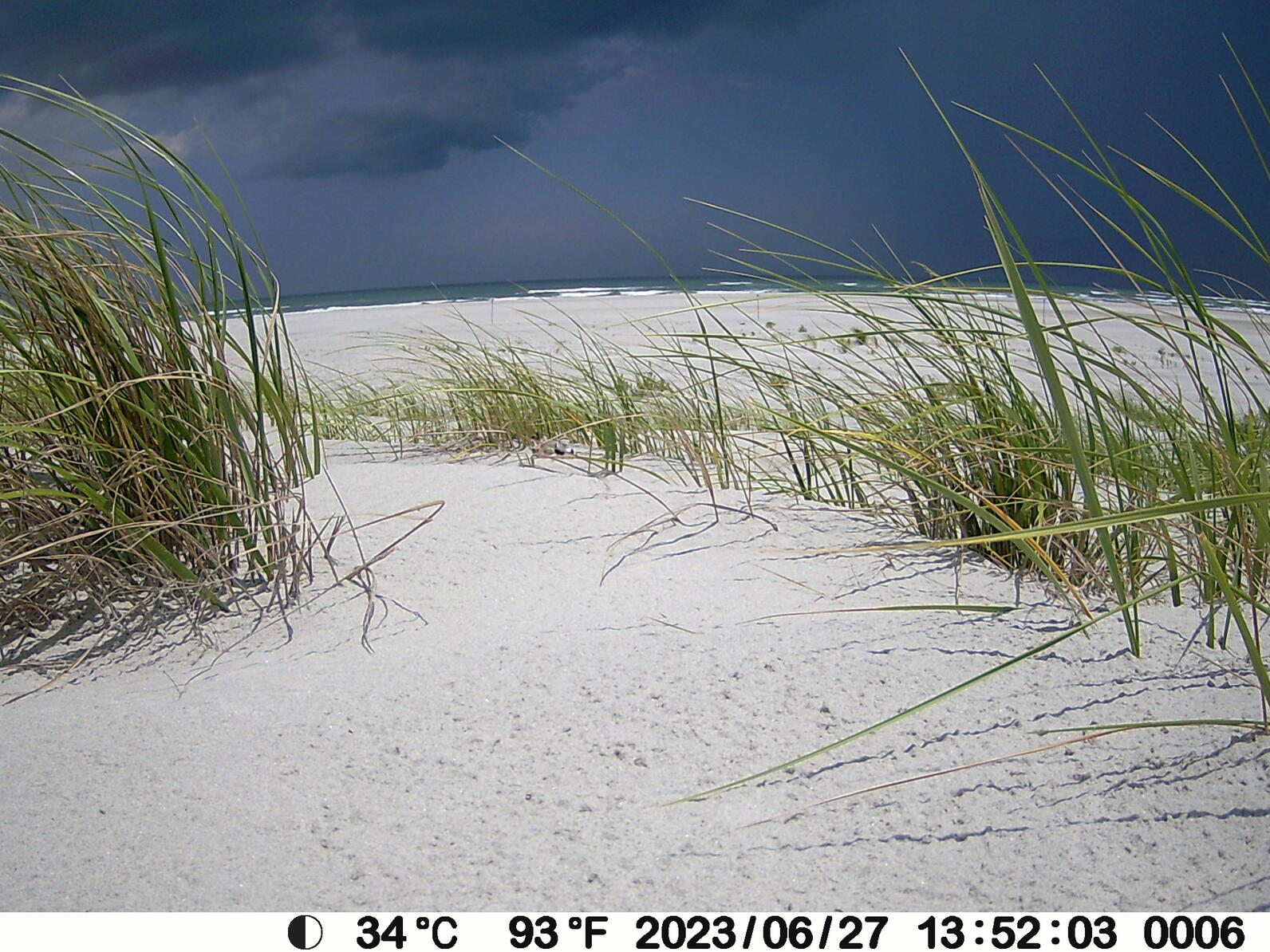
The story of this Piping Plover pair is not unique. In fact, all of our coastal birds face similar threats during the breeding season. Our coastal team works year-round to protect sites like this one so that birds can successfully raise their young.
Audubon’s coastal sanctuaries provide a home for 40 percent of the state’s coastal nesting water birds. You can help us by respecting posted nesting sanctuaries, keeping your dogs leashed and well back from posted areas, and enjoying these birds from a safe distance.





